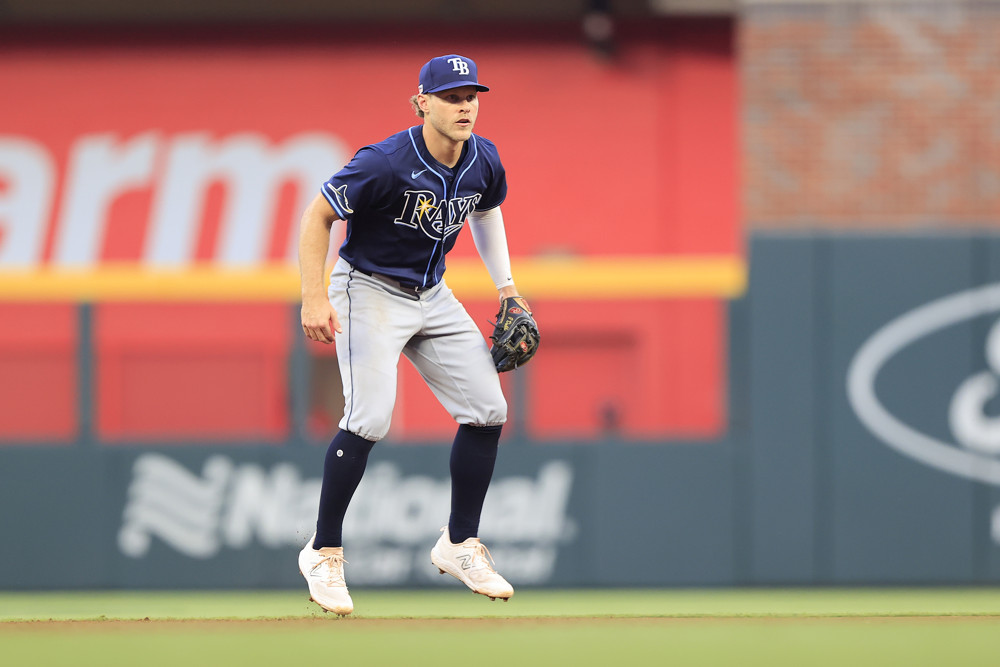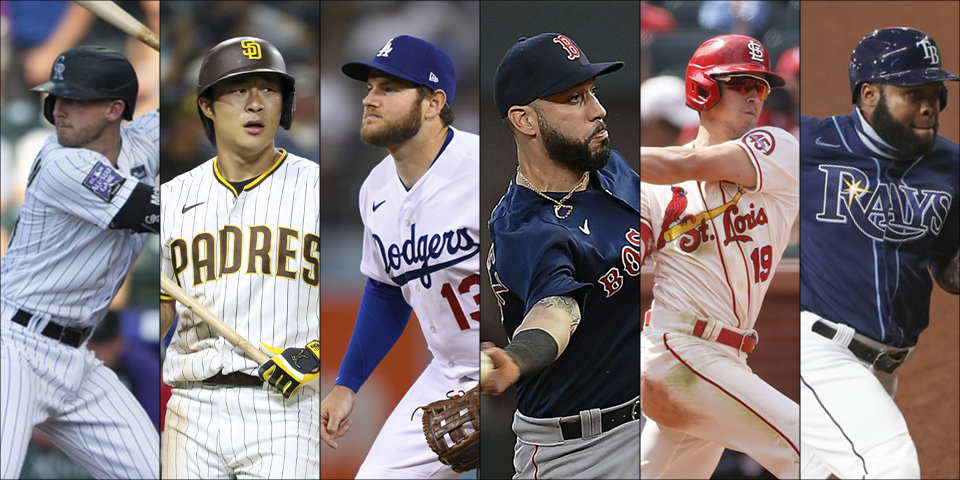They say you should catch readers early with a hot take, so here it is…
The Angels haven’t had much success building a winner around Mike Trout and Shohei Ohtani.
…
No? Eh, back to the drawing board.
There is one thing that they seem to be doing well of late:
Giving opportunities to players at positions they had played in the majors a little, but not a lot, who can bring quality defense to the table.
In each of the last two seasons, an Angels infielder has become a primary contributor at a defensive position that he hadn’t spent much time at previously.
In 2021, in the first full season after the team’s acquisition of Anthony Rendon, David Fletcher became a full-time second baseman. He had played the better part of a season’s worth of innings at the position across three years in the majors, and saved a pretty solid 13 runs in that time.
Given a full year of playing time at second, Fletcher was outstanding. He finished as one of the top three candidates for both the AL Gold Glove and the Fielding Bible Award, ranking second at the position in DRS. He didn’t maintain the same elite level of per-inning performance that he had shown in the previous three seasons, but we know not to expect such things.
David Fletcher Stats as 2B
| Season(s) | G | Inn | DRS |
| 2018-20 | 100 | 729 | 13 |
| 2021 | 142 | 1212 | 11 |
That season, Fletcher’s strong showing was more than counterbalanced by the performance of shortstop Jose Iglesias. The veteran far and away cost his team the most runs of any shortstop, with -22.
So, in 2022, the team brought in journeyman Andrew Velazquez.
He had spent the last three seasons bouncing around four different franchises, with fewer than 200 career Major League plate appearances. A slugger he is not, but he had major league playing time at six positions (including shortstop and center field), so being light on MLB experience specifically at short wasn’t necessarily a deal-breaker.
When given a full season of opportunity, Velazquez delivered on the defensive upside his limited playing time had suggested. He placed fourth in the majors in DRS among shortstops, and because of his positional value cracked the top 10 in the AL in Baseball-Reference’s Defensive WAR.
Andrew Velazquez Stats as SS
| Season(s) | G | Inn | DRS |
| 2018-21 | 60 | 360 | 4 |
| 2022 | 124 | 906 | 11 |
Naturally, not all players with small samples of strong (or weak) defensive numbers go on to deliver on their initial impressions when given more opportunity. But the Angels have had some measure of success with it of late. They’re likely going with yet another new face at shortstop this year in Luis Rengifo, whose results are likely to be somewhere in the middle between Iglesias and Velazquez.
With our database, we can take this out of the realm of specific examples and look at the last decade all at once.
Both Fletcher and Velazquez are examples of players I’ll call “innings jumpers,” which I’ll define as those who, for a given position:
- played at least 600 innings more than their previous high
- played more innings than they had total in their career
We can look at those jumpers to see how well their small-sample numbers translated when they were given a lot more playing time. To do that, I also make sure that the player had at least 300 career innings prior, so there’s enough of a track record to compare to. That gives us 60 such players over the last decade.
To give a comparison, I also am including the same stats for a group of players who didn’t have a jump in innings but who also had at least 900 innings at a position in a season (think 300 career minimum + 600 inning jump).
Here’s how those players looked coming in, and how their performance in the next season correlated with their previous results.
| Innings Jumpers | Comparison Group | |
| Career Inn | 545 | 4,830 |
| Season Inn | 1,184 | 1,147 |
| DRS/Inn Correlation | 0.43 | 0.50 |
When comparing the players’ career DRS with their results in the next season, the innings jumpers are barely less projectable than the players with a much more pronounced track record.
We can look at this another way, focusing on the players who had established being above average (+3 DRS per 1,000 innings) or below average (-3 DRS per 1,000 innings), and how they performed in the follow-up season. In this case, we can look at the average DRS per 1,000 innings of the players in that follow-up year compared to what they had shown previously.
Players With a Career -3 DRS per 1,000 Innings or Worse
| Innings Jumpers | Comparison Group | |
| Career Inn | 557 | 3,761 |
| Season Inn | 1,202 | 1,147 |
| Career DRS / 1000 Inn | -12 | -6 |
| Season DRS / 1000 Inn | -2 | -4 |
Players With a Career 3 DRS per 1,000 Innings or Better
| Innings Jumpers | Comparison Group | |
| Career Inn | 531 | 4,981 |
| Season Inn | 1,176 | 1,149 |
| Career DRS / 1000 Inn | 10 | 9 |
| Season DRS / 1000 Inn | 3 | 5 |
This exercise illustrates the power of regression to the mean.
The innings jumpers showed strong (positive and negative) results in small samples, and in general maintained that direction of performance when given more opportunity, but were much closer to average.
The comparison players didn’t have as extreme performance prior, but they “held onto” their track record more in the following season.
These results are encouraging for the value of small-sample defensive metrics, at least directionally.
The key takeaway: Players who show themselves to be solidly above or below average in limited playing time are as likely to maintain that as those with much longer track records.
There are some limitations, however. We shouldn’t expect the scale of a player’s small-sample performance to maintain itself (as seen in the last table). We’re looking at players who did actually play a full season, but many players who are given opportunities don’t play well enough to get there. (I don’t think that’s a huge concern, because we’re also showing an effect for poor defenders). And this is still a pretty small group of players to evaluate, based on the constraints we’re putting on it.
All that said, it’s a compelling jumping off point for the defensive metric enthusiasts among us. And it gives us a bit of a framework within which to talk about players like Brendan Donovan and Bryson Stott, who are being given the keys to a position that they dabbled with in their MLB debuts.


